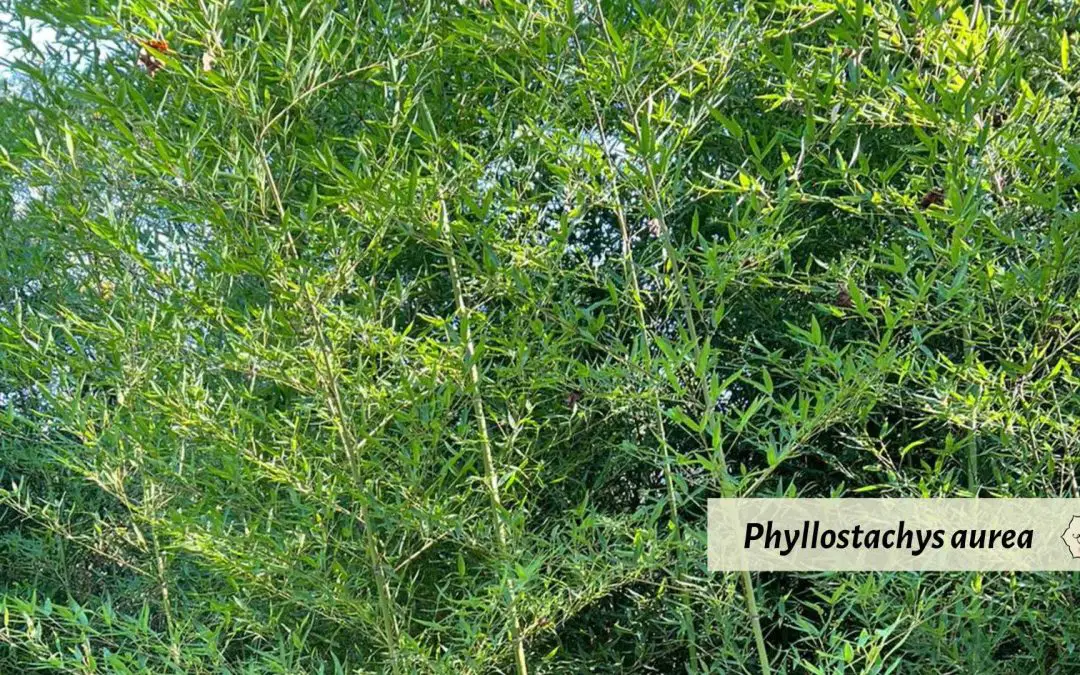If you’re relatively new to bamboo, you might be looking for a popular variety that’s easy to recognize and quick to grow. Perhaps someone recommended growing Golden Bamboo. Or maybe you came across it in a magazine and thought it would look great in your backyard. You can even find plants labeled as Golden Bamboo at your neighborhood nursery or hardware store. But what is Golden Bamboo? Is it the same as Yellow Bamboo or Yellow Groove Bamboo?
The common name Golden Bamboo can refer to several different species of bamboo, but usually Phyllostachys aurea and sometimes Bambusa vulgaris. Like many varieties of bamboo, these both have characteristically yellow canes. But they are quite different in many other respects. P. aurea is a temperate, running bamboo. It’s cold-hardy and fast-spreading, with modest-sized culms. It’s closely related to Yellow Groove Bamboo. In contrast, B. vulgaris is a clumping bamboo that prefers warmer, milder climates, and can grow to an impressive 50 or 60 feet tall with 4-inch thick culms.
NOTE: This article first appeared in February 2021, most recently updated in June 2024.
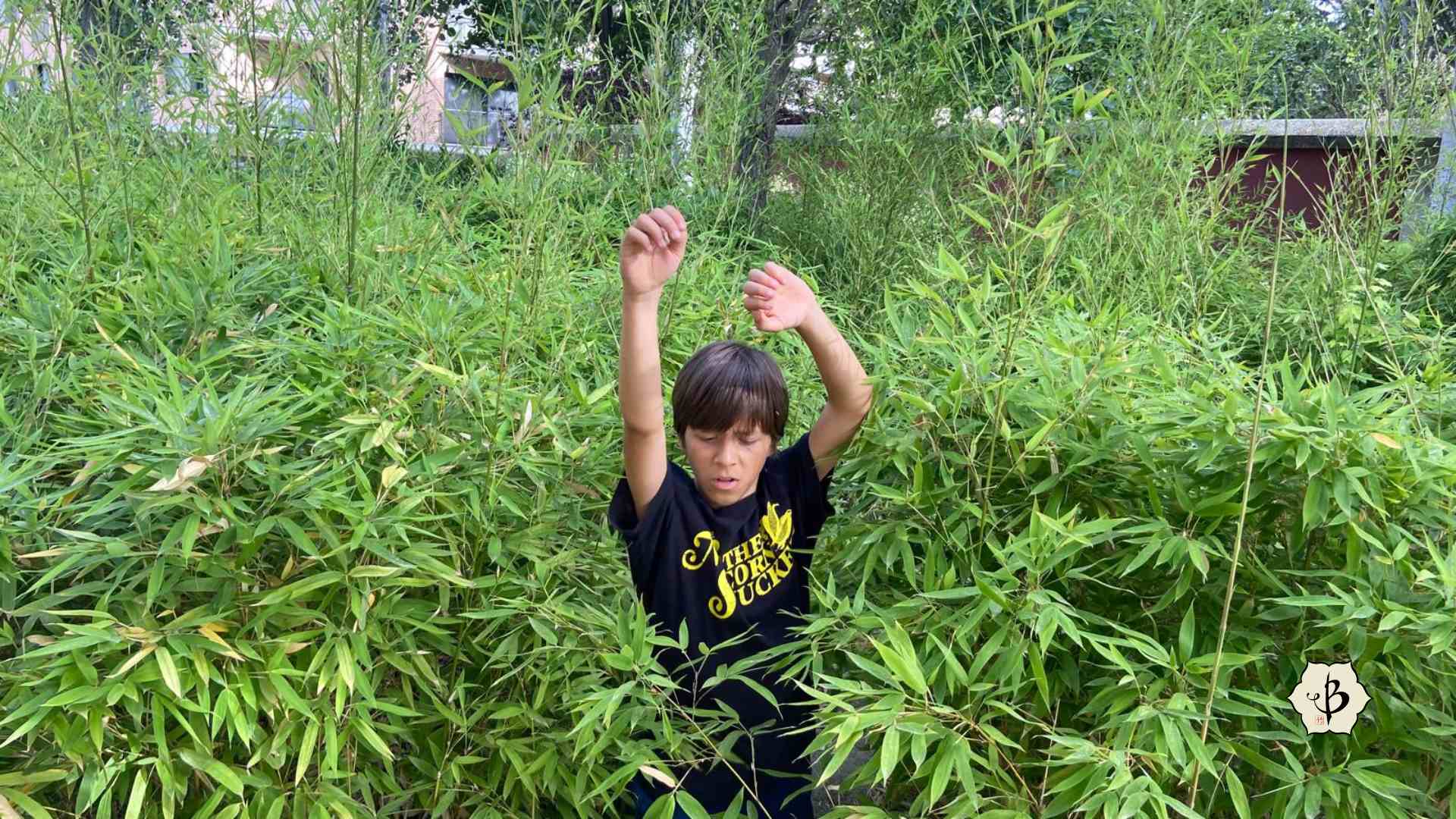
Bamboo classification
The world of bamboo is vast and astonishing. A subfamily of Poaceae, the grass family, bamboo includes three tribes, further divided into more than 90 genera and roughly 1,400 species. Beyond that, many species have multiple cultivars (subspecies), bringing the total number of bamboo varieties closer to 2,000.
Bamboo is pretty distinct in appearance, with its upright, woody canes (culms) and graceful, lanceolate foliage. So it’s fairly easy to recognize, but at the same time, it’s pretty difficult to distinguish one species from another. In many cases, in fact, the experts can’t even agree whether certain specimens are distinct species or merely cultivars.
And when it comes to grouping bamboos into their genera, the task can get even more challenging. The genus Arundinaria, for example, has long been plagued by controversy. But today most authors agree that only three species of North American bamboo belong in this genus, and all other former members belong elsewhere. The classification of Himalayacalamus is also somewhat confusing. And as new species are discovered, the confusion only proliferates.
Bamboo terminology
Botanists and aficionados tend to refer to their bamboos by their binomial nomenclature. That’s the two-name system that includes the genus followed by the species of the plant, like Bambusa oldhamii. But sometimes the botanical name is just too much for the average gardener to get their mouth around. That’s where the common names come in handy. Semiarundinaria fastuosa, for example, is much more easily identified as just Temple Bamboo.
Common names are useful because they don’t require scientific expertise. At the same time, however, they lack scientific precision. When someone says they’re growing Timber Bamboo, they might have a very particular species in mind. But there are actually dozens of varieties of timber bamboo out there. Not only that, but there’s also an abundance of variation among those timber bamboos. Some are runners, some are clumpers, and some are strictly tropical. So the name doesn’t really tell you anything, except that it’s a big bamboo.
The same issue can happen with Black Bamboo, Blue Bamboo, and Dwarf Bamboo. (That’s why we’ve written detailed articles about these varieties, to help you all differentiate!) And of course, it happens with Golden Bamboo as well.
When you think about it, most varieties of bamboo can be described as golden. Quite of few of them, anyway, have culms that are some shade of yellow. Some are buttery, others flaxen, and occasionally fulvous. (I know, right?) And even with the deeper green canes, many will turn yellow as they mature. But indeed, some bamboos are yellower than others. And this brings us to those commonly known as golden.
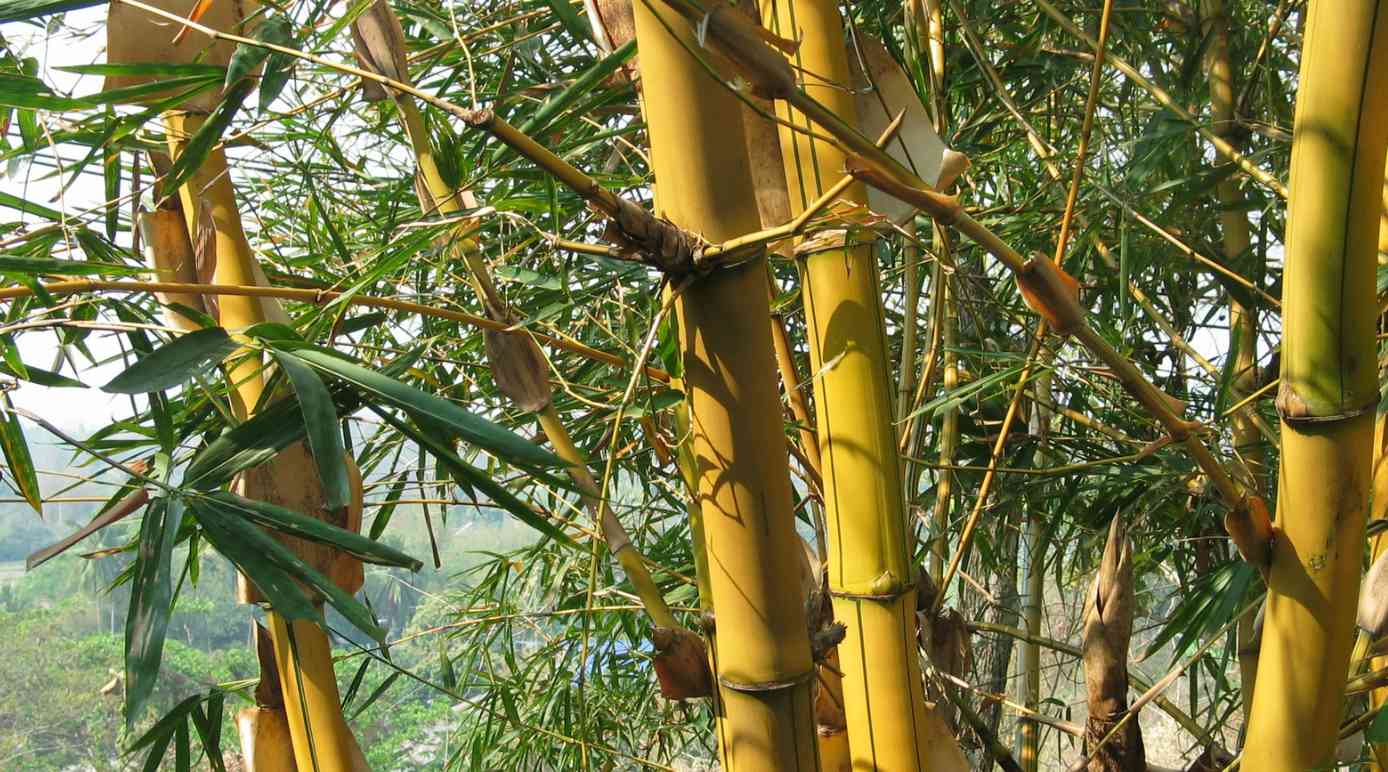
Species of Golden Bamboo
Generally speaking, the varieties most commonly referred to as Golden Bamboo belong to one of two genera, Bambusa or Phyllostachys. Bambusa is probably the most diverse genus of bamboo, including well over 100 species, mostly tropical or subtropical. And they’re all clumpers, with the compact rhizome root systems that we can describe as non-invasive.
Phyllostachys, on the other hand, are running bamboos, with aggressive and potentially invasive rhizomes. Species of this genus are mostly native to temperate Asia, namely China and Japan. They are far more cold-tolerant than Bambusa, able to survive freezing cold snaps as well as subtropical heat and humidity.
Phyllostachys aurea
This is the species most often known as Golden Bamboo, and most appropriately, as “aurea” literally means golden. It’s also called Fish Pole Bamboo, based on one of its more traditional uses. And it’s one of the most widespread of all ornamental bamboo species. P. aurea can thrive in a wide range of climates and soil types, but it can also become invasive if not closely monitored. That’s one of the reasons it has proliferated so successfully around the world.
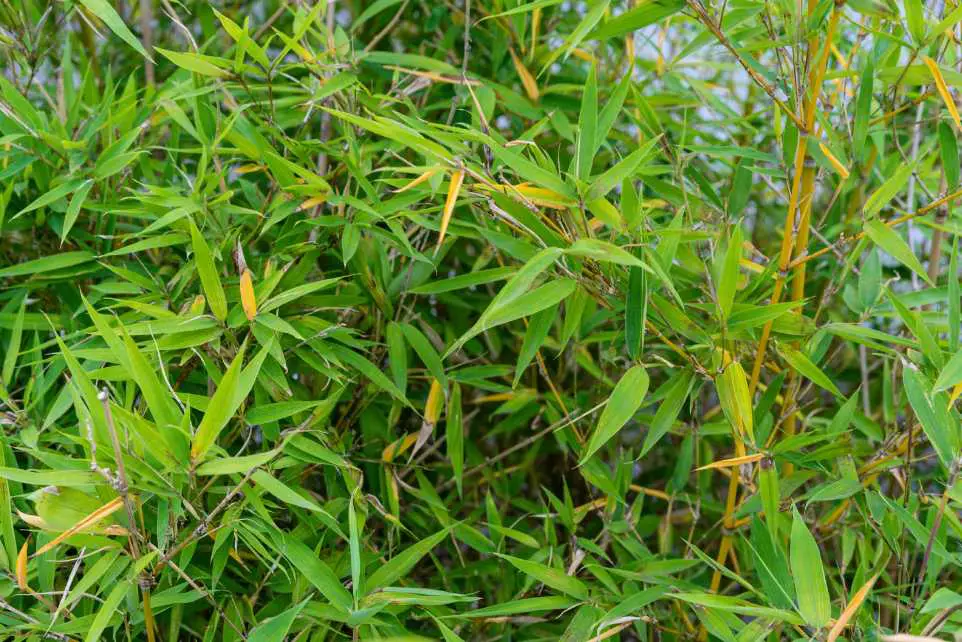
P. aurea typically grows 20 to 30 feet tall, with culms just over an inch in diameter. It also does well in a pot or container, which keeps it smaller and prevents it from overtaking your garden. Young shoots come up green and turn yellow with age, thus earning it the name “Golden Bamboo”. Excellent for climates with cold winters, it’s cold hardy to about 0º F, but also tolerates hot summers.
If you’re interested in bamboo for fishing poles, you should also take a look at Pseudosasa amabilis or Tonkin bamboo.
Phyllostachys aurea ‘Albovariegata’
A smaller subspecies of Golden Bamboo, with lovely green and white stripes on the leaves.
Phyllostachys aurea ‘Holochrysa’
An especially rare subspecies of Phyllostachys aurea, this specimen exhibits an unusual formation of internodes, very similar to Tortoise Shell Bamboo, or Phyllostachys edulis ‘Heterocycla’.
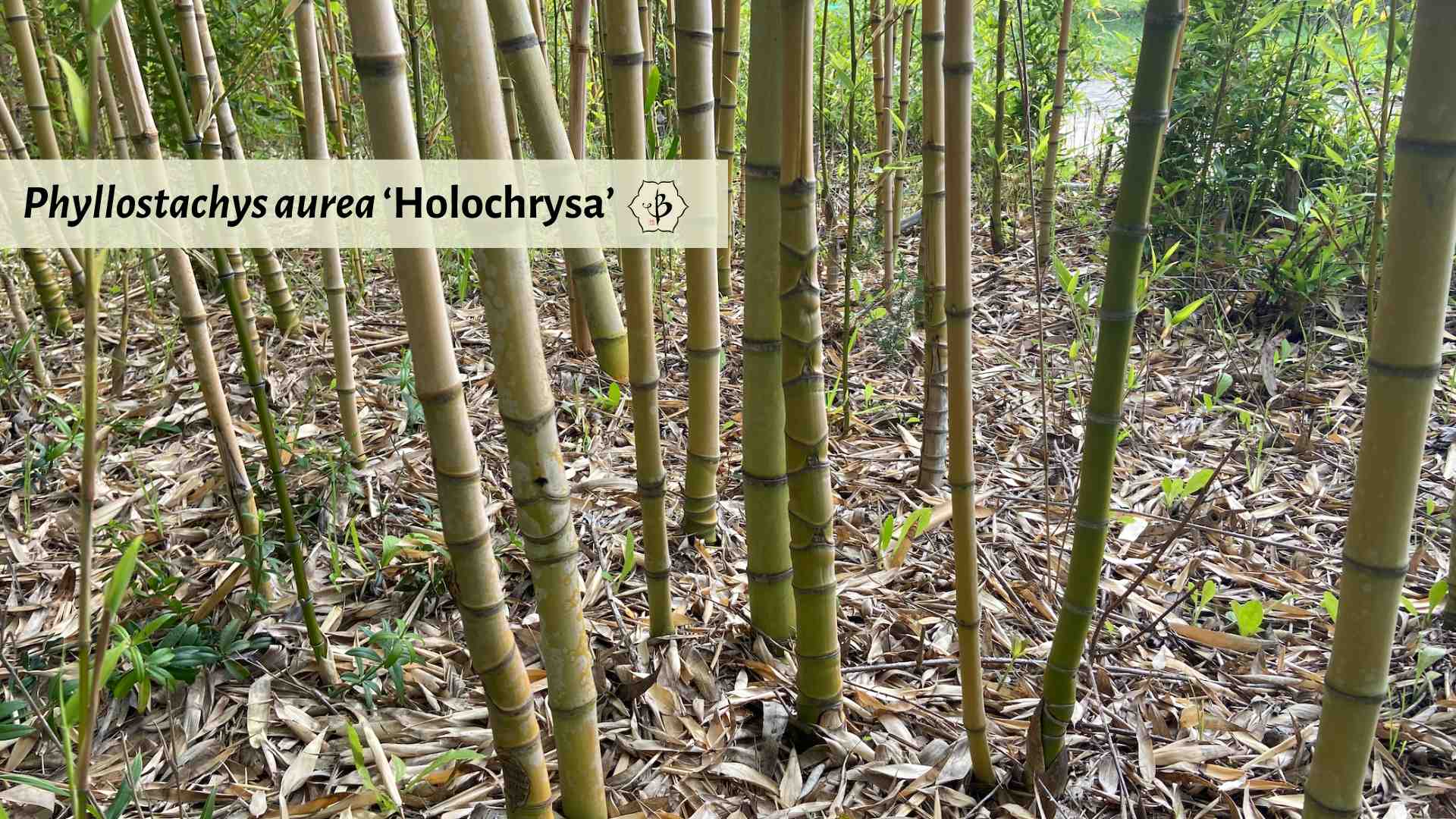
Phyllostachys aurea ‘Waminita’
Another cultivar of the more common species, Waminita is a fairly rare dwarf variety that’s especially well-suited for bonsai. Culms grow a little over a foot tall, and the internodes will bulge, especially when kept in a small container.
Phyllostachys aureosulcata
Aureosulcata means “golden groove”, referring to the visible stripes found on this species and the distinctive sulcus groove typical of all Phyllostachys varieties. Some nurseries confuse aurea with aureosulcata, so buyers beware!
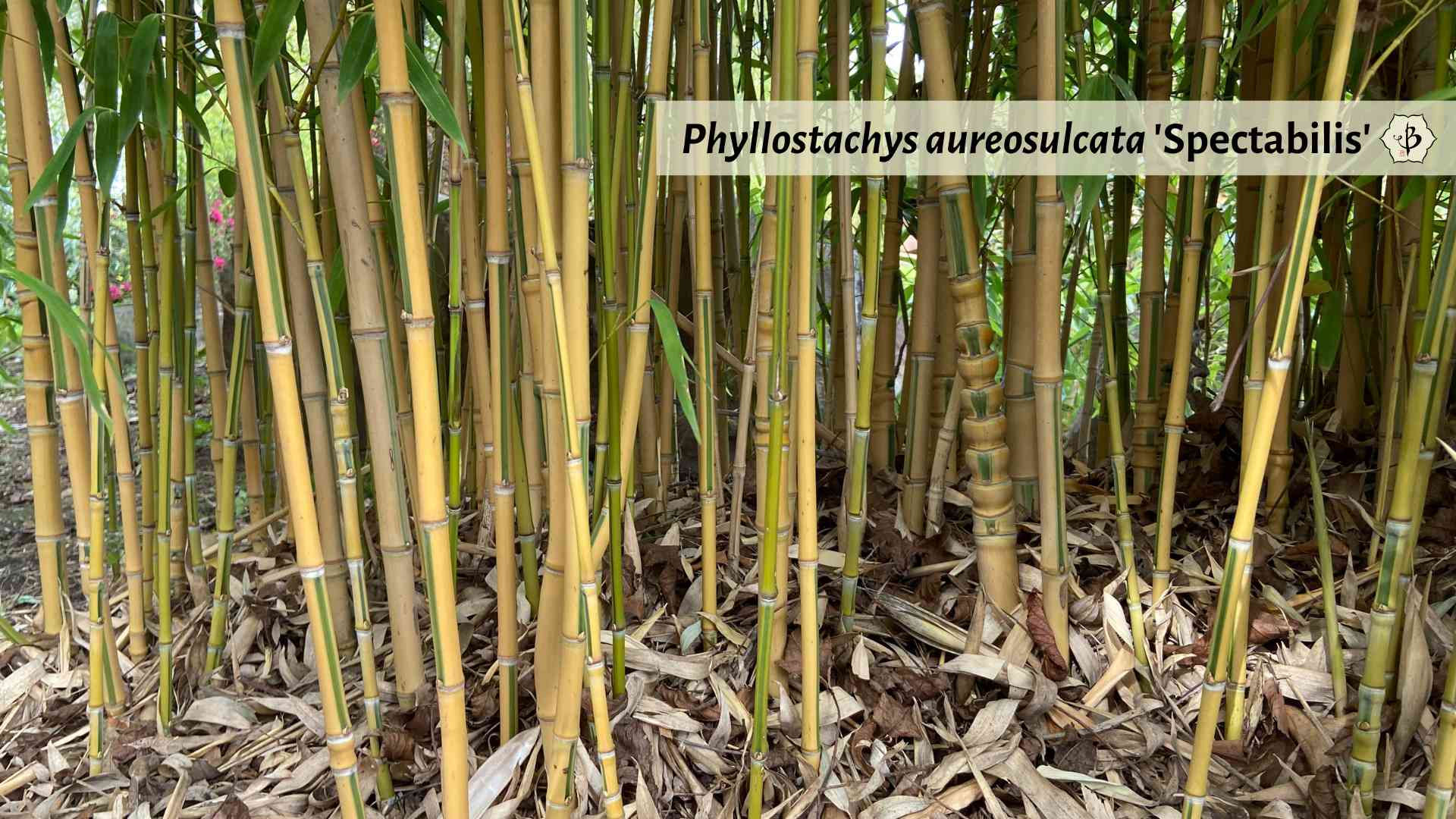
Ph. aureosulcata ‘Spectabilis’
Sometimes called Showy Yellow Groove Bamboo, this unusual cultivar is a favorite among bamboo growers. The poles are very attractive, with colorful stripes, as the name suggests. A tendency to zigzag also adds interest to the culms. They normally get about 20 to 30 feet tall, up to 2 inches thick, and can provide a good privacy hedge. Hardy to -10º F.
Ph. aureosulcata ‘Alata’
Another cultivar of Yellow Groove Bamboo, sometimes called P. aureosulcata ‘Pekinensis’, with a very straight, upright habit.
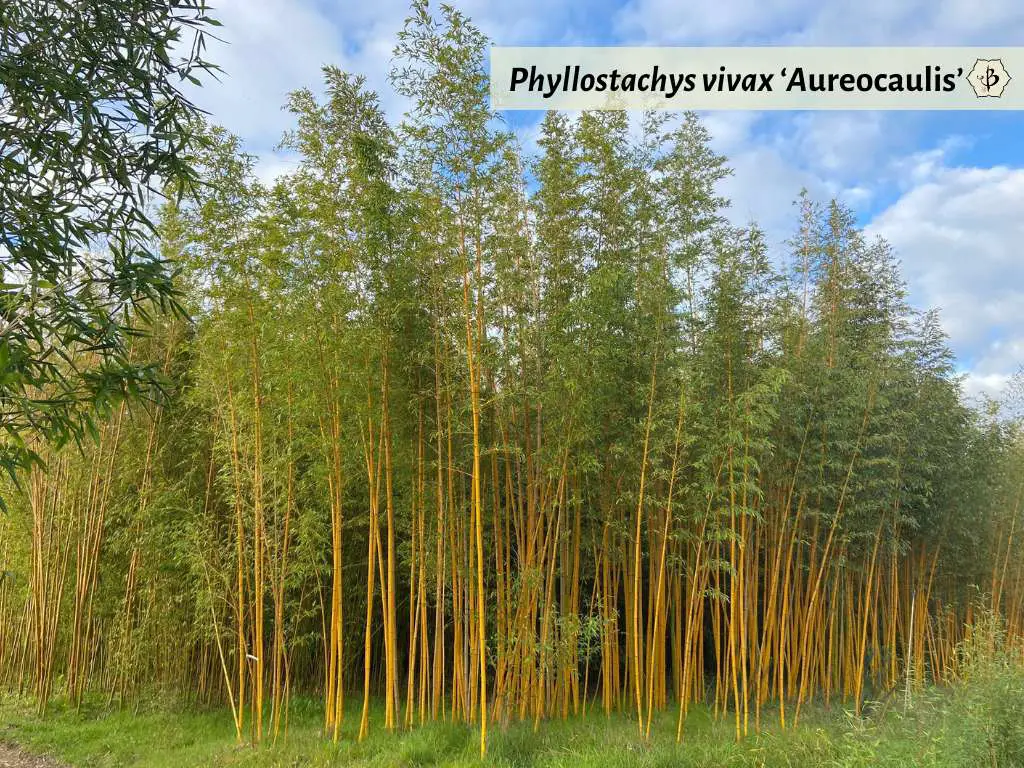
Phyllostachys vivax ‘Aureocaulis’
Another Phyllostachys species with gold in its name, this is an especially elegant and attractive cultivar of Vivax, a fairly common strain of timber bamboo.
Bambusa multiplex
This species is native to China and other parts of Asia, but widely grown as an ornamental in many more parts of the world. It has a number of subspecies, one of the most popular being ‘Golden Goddess’. Manageable in size, this clumping bamboo grows about 10-20 feet tall, with half to one-inch culms, and an abundance of leafy foliage. Cold-hardy down to 15-20º F, it can withstand a bit more frost than most tropical bamboos.

Another subspecies of B. multiplex is ‘Alphonse Karr’, one of the most beloved bamboo varieties of all, renowned for the spectacular green and gold striping on its culms.

Bambusa vulgaris
Often called Golden Bamboo, but it’s also known as Common Bamboo, which is the direct translation of its botanical (Latin) name. This species comes from China and East Asia and has now spread all over the world. It has naturalized in many parts of Asia and beyond, and is widely cultivated in gardens. Impressive culms grow 30-40 feet tall and up to 3 inches thick. The species has numerous cultivars, including some popular ornamentals.
Bambusa vulgaris ‘Vitatta’
Sometimes called Golden Hawaiian Bamboo or Painted Bamboo, Vitatta was formerly identified as B. striata. Stunning, colorful stripes make the culms of this plant remarkably beautiful, and also very highly sought after by gardeners. Their size is impressive as well, reaching up to 30-40 feet tall and about 3 inches thick. Not cold tolerant below 30º F, but very popular in tropical or subtropical climates.
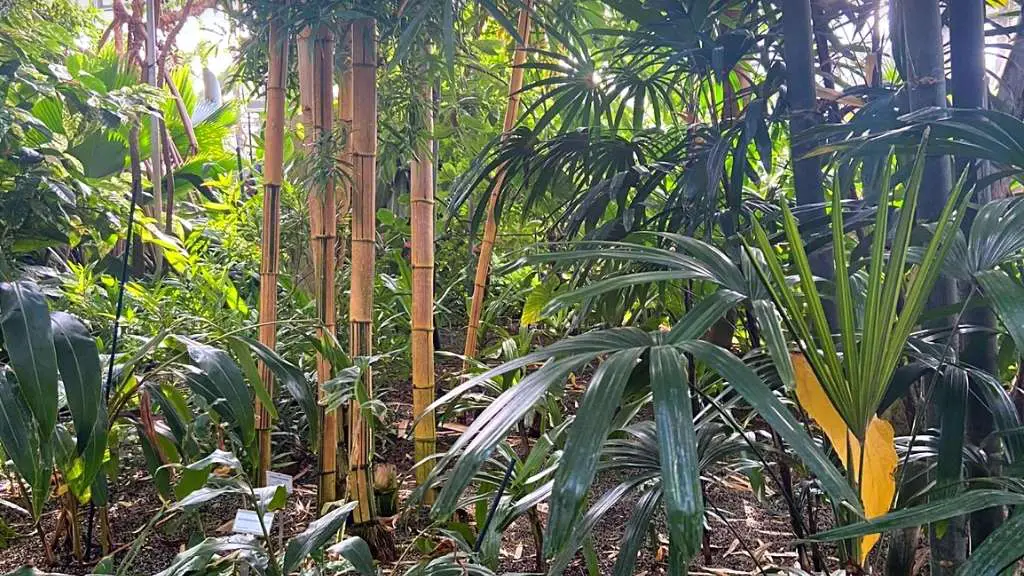
Prized by gardeners, Bambusa vulgaris grows like a weed across the tropics. What probably originated in China or Taiwan has now proliferated across the tropics throughout India, Latin America, and all over Africa. This is thanks in part to the sailors and conquistadors from the age of exploration who recognized the utility of this remarkable grass. Vulgaris is also one of the easiest species to propagate. Throw a branch on the ground and bury a cutting halfway in the dirt, and within weeks or months, you’ll have a bristling bamboo plant. In a couple of years you’ll have a bushy thicket.
Learn more
If you enjoyed reading about the various species of Golden Bamboo, you might also check out some of these related articles.
- 10 Best bamboos for your garden
- How to choose the right bamboo
- Shopping for live bamboo
- Directory of bamboo nurseries
FEATURED PHOTO: Phyllostachys aurea, also known as Golden Bamboo, growing to unusually great size in rural Alabama.

